One of UK conservatory owners’ biggest complaints is that their conservatories become too cold to use in the winter. Unpredictable weather in Great Britain can mean they go unused for several months a year.
Given that a conservatory is a significant investment, you want it to be a comfortable living space all year round.
Don’t worry. We have 25+ years of experience in providing and installing conservatories in the UK, and we have learned a trick or two.
In this blog, we offer practical and cost-effective solutions on how to stop heat loss in a conservatory.
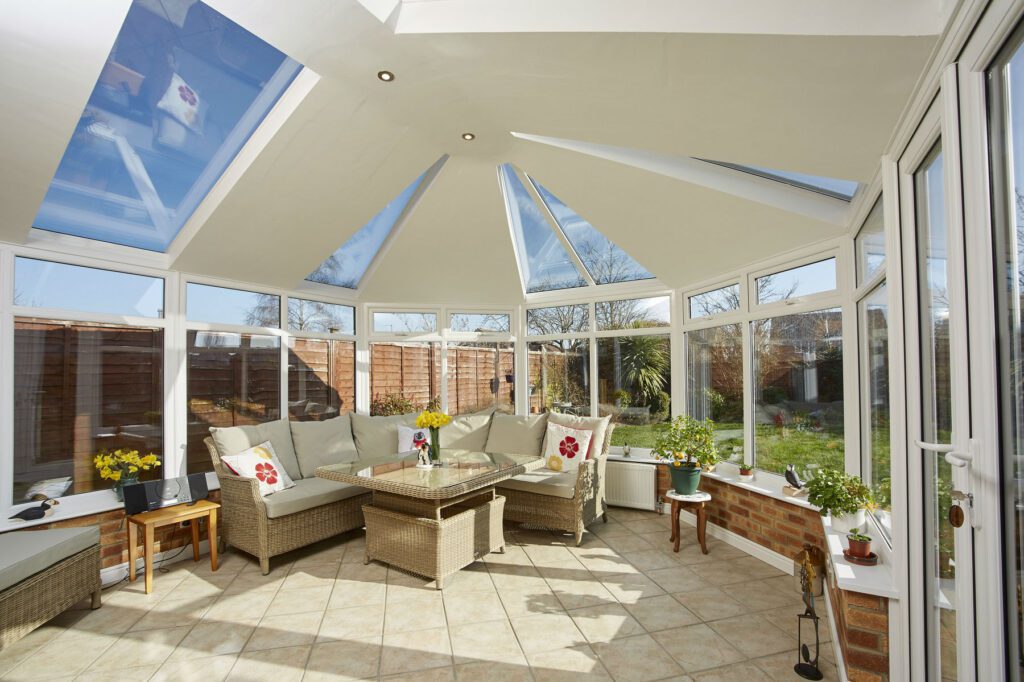
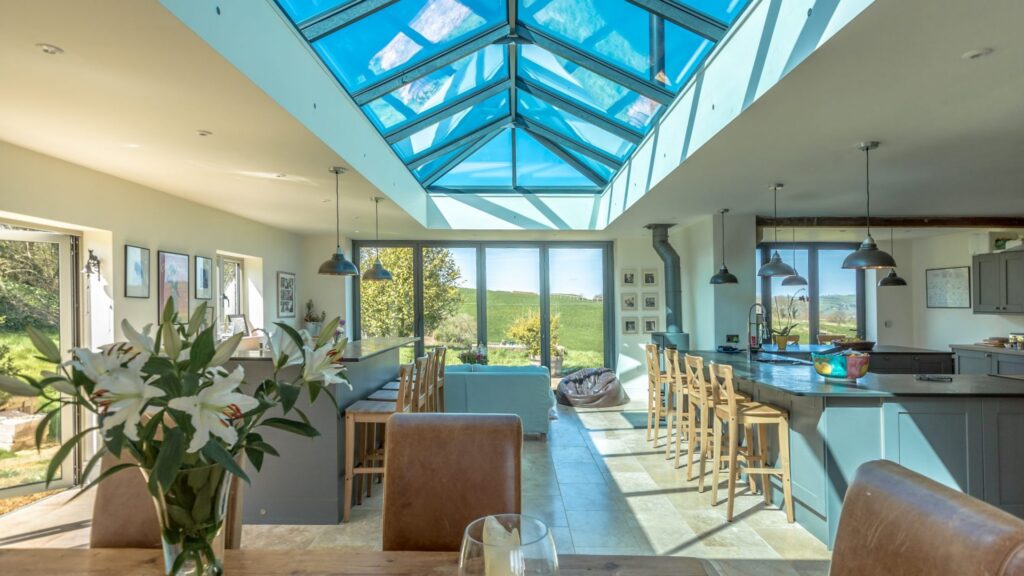
Insulate Your Conservatory’s Windows
One of the top questions on this subject is ‘What is the best way to insulate a conservatory?’
The answer is multi-layered, but insulating your windows is the first step.
Around 18% of heat in the home is lost through windows and doors. With a conservatory, most of the structure is glass, so this can quickly become a serious problem.
Insulation starts with your choice of windows.
A good rule of thumb is to go for the highest-rated windows you can afford, if that is A-rated, so much the better.
Single glazing is no longer fit for purpose, so choose double or triple-glazing for your conservatory’s windows. We also offer innovative low-emissivity (Low-E) Planitherm triple glazing for the ultimate in energy-efficient windows.
If your budget won’t stretch to replacing your single glazing, or you are in rented accommodation, removable magnetic secondary glazing is a cost-effective short-term solution.
Alternatively, low-e window film can improve your conservatory’s heat retention by up to 41% on single glazing. In the summer, the film will reflect solar heat away from the window to keep the conservatory cool and comfortable.
You could also try thermal-lined pleated cellular blinds or thermally insulated curtains which provide an extra layer of insulation and can be opened or removed in the warmer months.
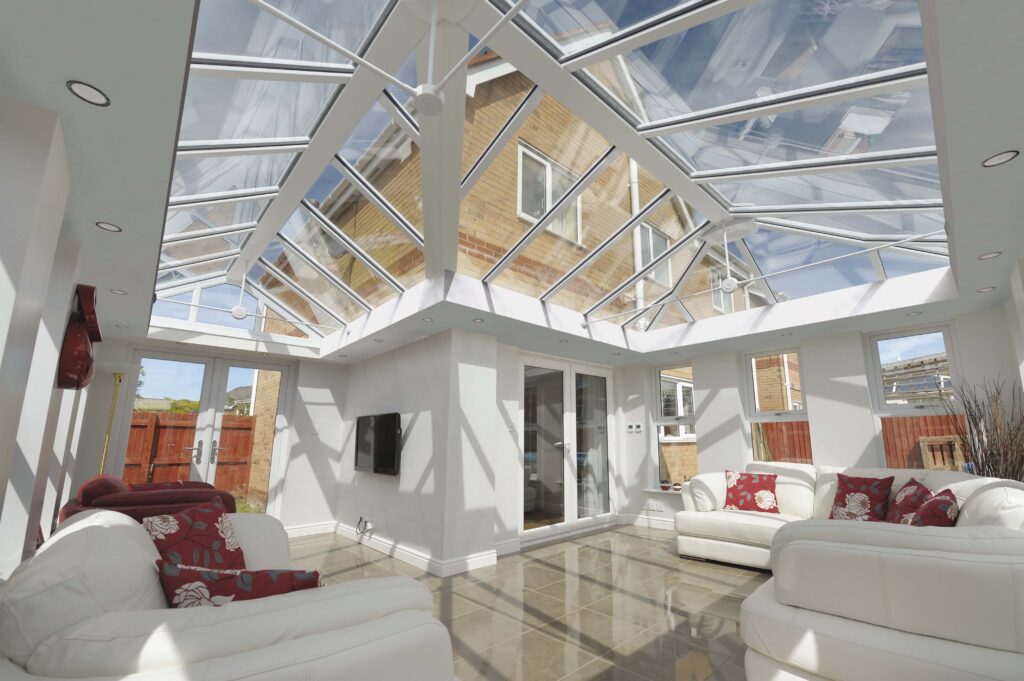
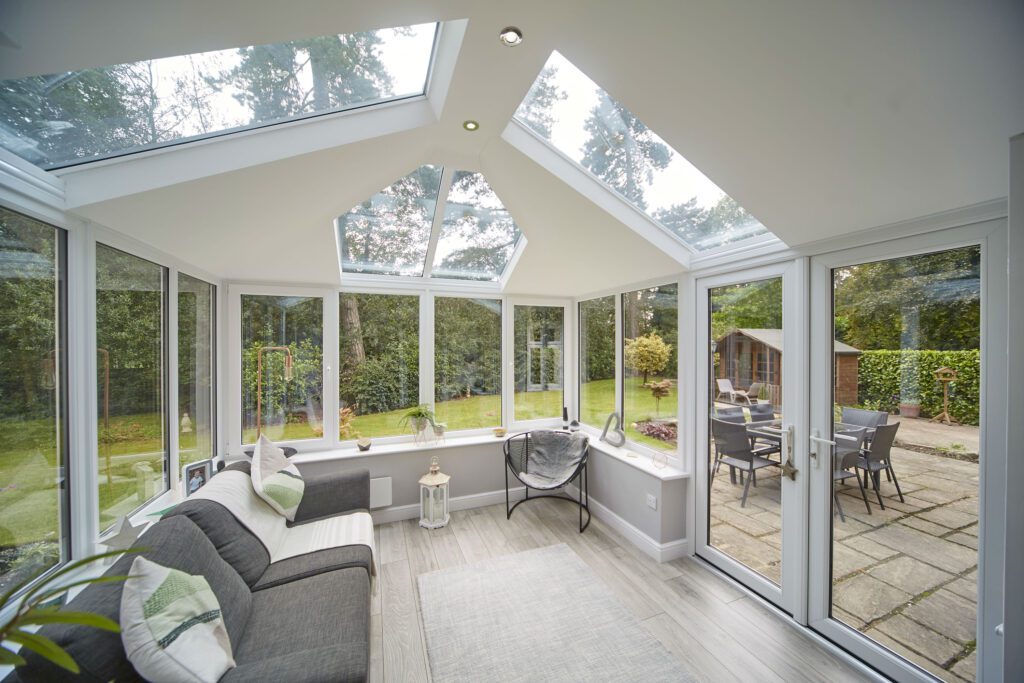
Heating
The optimal comfortable temperature for a living space is between 18-21 degrees, according to The Energy Savings Trust. An effective heating source is crucial for maintaining a comfortable temperature.
There are several options for heating your conservatory, and some of the same advice on how to heat your home applies.
- Take control of your heating by installing a thermostat.
- Install energy-efficient electric radiators or infrared panels.
- Thermostatic radiator valves (TRVs) enable you to adjust the temperature of individual radiators to prevent energy waste in rooms you are not using.
- Portable oil-filled radiators are a flexible option.
- Consider column radiators or fireplace-effect heaters – decorative and efficient heating options.
- Some fans are dual-purpose – heaters when it is cold and freestanding air conditioning in the summer, ideal for conservatories.
- Wi-fi heaters can be controlled via your phone to help you maintain a comfortable temperature.
- Solar-powered tiled roofs can help heat your conservatory from the outside in.
- Invest in underfloor heating.
- You could also install a gas fire.
Draught Proofing
Draughts can leave a room feeling cold and unwelcoming, making heating inefficient and wasting energy.
Unfortunately, draughts can get in through even the smallest gaps, so it is important to ensure you fill or close them.
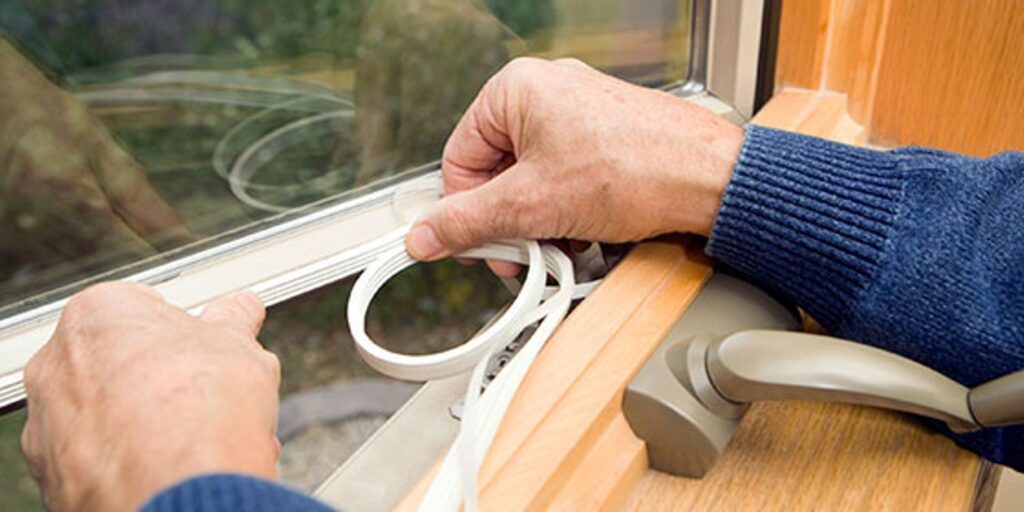
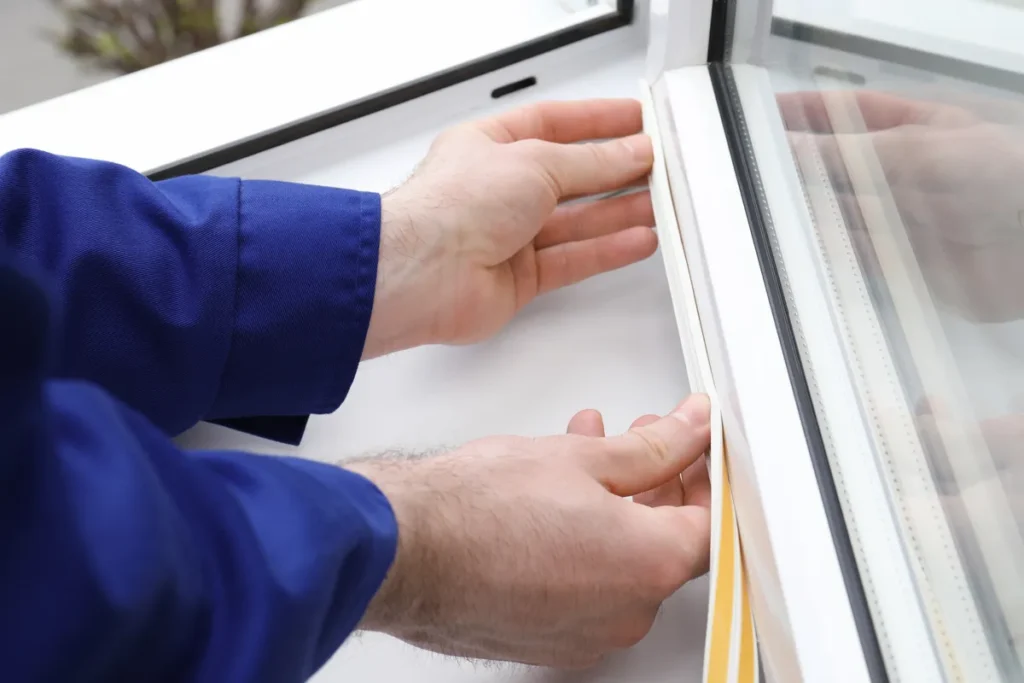
- Gaps around windows and doors - weatherstripping adds an extra layer of waterproofing and insulation to prevent heat loss.
- Draught excluders - can prevent heat loss under the bottom of doors leading to the conservatory, where a natural gap occurs between the door and floor.
- Self-adhesive foam tape - Easy to install and inexpensive foam tape can be used to close any gaps around door and window frames without interfering with their function.
- Automatic door sweeps - A clever mechanism like a metal bolt or a strip that automatically drops down into place to lock the door and prevent draughts when the door is closed. They also keep insects out and provide extra security against intruders.
Rugs, Carpets, and Underfloor Heating
Conservatory floors can often feel cold, hard and uninviting. Depending on the main use of the space, they tend to be laminate, vinyl, or stone. Wood isn’t typically recommended as it can warp or rot due to excessive moisture exposure and temperature variations. These materials are chosen for their hardiness and easy-clean properties, but they may feel cold underfoot during winter.
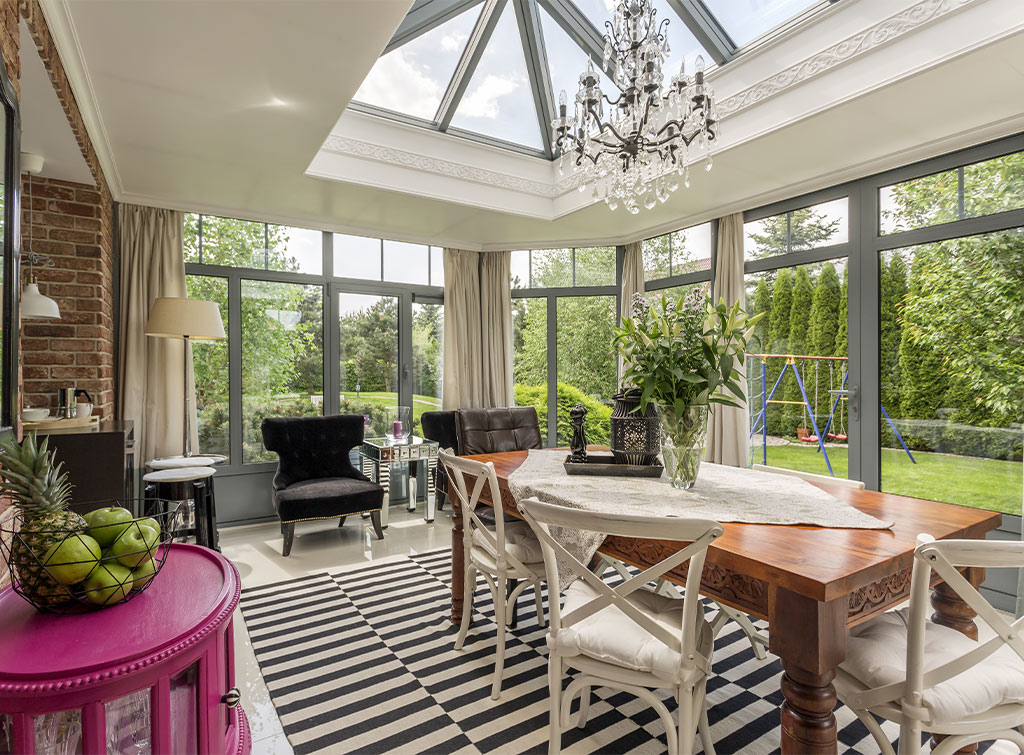
Rugs & Carpets
The easiest way to warm a floor is by adding a rug. Rugs come in a myriad of colours and styles, plus all shapes and sizes, so it is easy to find one that matches your aesthetic and your budget. The best rugs for conservatories are thick and luxurious. Thermal-backed rugs will help insulate the floor without a full carpet.
Not that there’s anything wrong with a full carpet, it is just less practical for most conservatory owners as it can’t be removed when the temperature rises.
Alternatively, installing insulated sheets under your carpet or flooring will ensure the whole floor feels warmer while reducing the heat being lost from your floor.
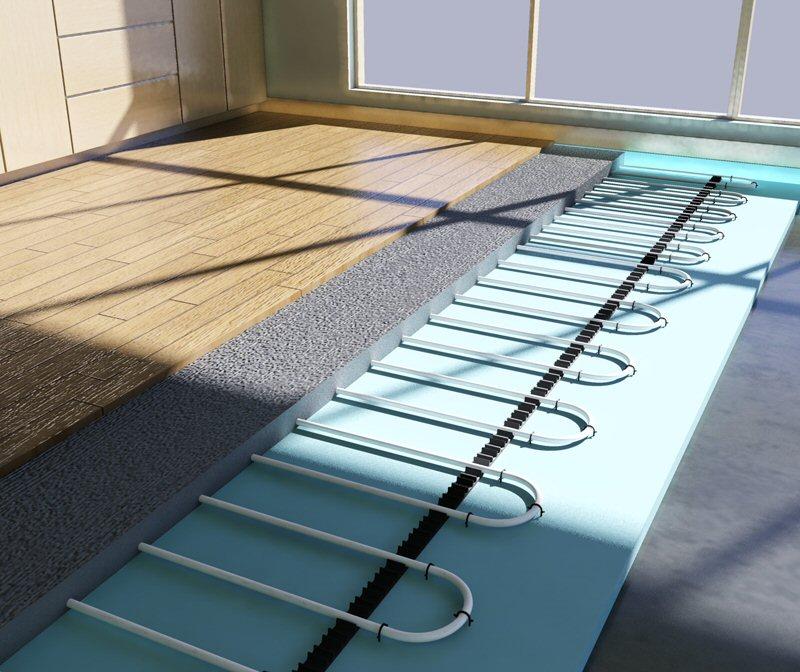
Underfloor Heating
Another more permanent but also more expensive solution is underfloor heating.
It is popular with UK conservatory owners because it offers a more even heat distribution.
Other benefits include:
- Energy-efficiency – underfloor heating uses lower temperatures to achieve the same warmth as radiators, reducing your heating bills and carbon footprint.
- Saving space – you do not need bulky radiators, and underfloor heating doesn’t take up any space.
- Aesthetic appeal – Underfloor heating is not visible, so it does not affect the look of your floor or conservatory.
There are two different types of underfloor heating, each with pros and cons.
Electric Underfloor Heating
This is a separate system of heating mats, electrical cables or a combination which radiates heat up through the floor above.
Pros:
- Cheaper to install
- Easier and faster to install
- Works in homes without central heating
Cons:
- More expensive to run
Water-based (Wet) Underfloor Heating
Usually connected to your central heating system, this underfloor heating circulates hot water through a network of pipes beneath your conservatory floor.
Pros:
- More energy-efficient
- Good for larger conservatories
- Can be used as a primary heat source
Cons:
- Require specialist installation
- More expensive to install
Underfloor heating works best with hard floors such as stone, tile, and laminate. Although it is compatible with some carpets, you risk reducing its efficiency.
Whichever type you choose, you must consider the mess associated with the installation – likely digging up your conservatory floor – and the maintenance. Underfloor heating can be more difficult and expensive to maintain than traditional heating systems.
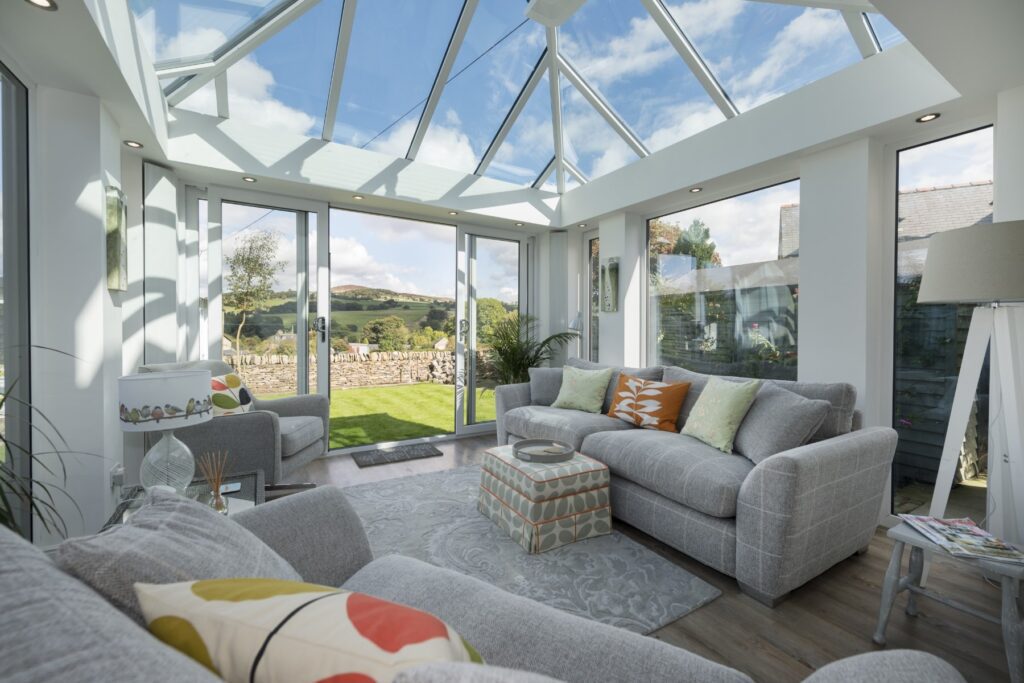
Add Soft Furnishings for Warmth
Adding soft furnishings is one of the best low-cost ways to heat a conservatory.
When it’s cold outside, hard surfaces such as furniture feel cold too, giving an overall impression of a lack of warmth in the room.
Blankets, scatter cushions and throws will help make a room feel cosy and comfortable without breaking the bank.
A conservatory can be quite a harsh and one-dimensional structure, so add depth and warmth by introducing different textures. Try a quilted armchair or cover any ‘patio-style’ furniture with slipcovers and seat cushions.
Velvets, chenilles, and suedette materials feel luxurious and are soft and snuggly to transform the space into a haven of warmth and comfort, perfect for cold days and nights.
It’s not all about aesthetics, though. Thermal-lined fabrics can help improve insulation so your room stays warmer for longer. You can switch to lighter fabrics as the weather improves and store your winter warmers when they are not in use.
How to Get in Touch
If you want to find out more about creating customised windows, doors, and conservatories, please don’t hesitate to get in touch. You can call us on 0161 976 4739, use our contact form or chat with us via the chat button at the bottom right of this website. If you live locally, you can also visit our Altrincham showroom, and check our contacts page for up-to-date opening hours.
We look forward to hearing from you!
FAQS
Yes, according to The Energy Savings Trust, insulating your floor could save you approximately £60 a year. This is particularly important in a conservatory where you do not have insulated brick walls to provide warmth. A cool conservatory floor can be pleasant in the summer, but it is uncomfortable and unwelcoming in the winter.
- Ensure all seals are airtight
- Add insulation boards beneath the floor
- Use thermal underlays or thermal-backed carpets and rugs
- Opt for underfloor heating
- Consider an engineered wood floor with a built-in thermal core
Designed to look like a wood-burning stove, a freestanding electric fireplace can be an excellent addition to a conservatory. It creates a visual centrepiece for a warm and cosy atmosphere while heating the room where you need it most. As a standalone unit, they don’t require venting or a chimney. You can choose from various styles and colours to blend with your aesthetic.
Because it is freestanding, you can easily move it around the room or store it away during the warmer months.
The most cost-effective way to heat a conservatory is to insulate it – windows, roof and floor, to reduce heat loss. Then add more insulation and increase heat with draught excluders, soft furnishings and traditional or underfloor heating as and when your budget allows.
Yes, underfloor heating offers several benefits in a conservatory (outlined above). However, it is a big commitment, so you need to be sure it is the right solution for you before you go ahead.
Similar to a window water leak, if hot air is escaping through your conservatory windows, you need to find the source of the leak and either repair the damaged part or replace the window. For example, if the seal has worn away or the caulk has broken, you can replace that aspect of the window. If the Argon gas has escaped, your window is no longer effective and will need replacing.
If there is no leak, applying a thermal film or using thermal-lined pleated cellular blinds or thermally insulated curtains can improve your insulation.




